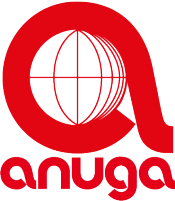Creativity, Quick Quality and Convenience-Plus: The Future of Frozen
Innova's number six Top Ten Trendfor 2023 – Quick Quality – has real significance for frozen food brands. During lockdowns, many experienced a change in their relationship with food. Culinary skills expanded and cooking became more than functional, serving as hobby and entertainment. Consumers want to maintain this connection but need help to fit it into their busier lives.

During the pandemic, many have changed their relationship with food: According to a trend survey by Innova, convenience food should not only be quick and easy to prepare, but also healthy and tastier than before.
Innovative applications
Brands are tapping into creative convenience by offering frozen products that can stand alone or be the base for more personalized cooking. In France, Picard has its customizable meal concept "Mix & Miam": a trio of individually wrapped courses that work together or as an accompaniment to the cook's imagination. Australia's Pie Society has a wide range of unbaked pies, carrying claims of freshness and better texture. Both products retain convenience while giving the consumer the option of adding their own twist. Meal kits and instant noodles are areas of major innovation too, with launches of both showing a CAGR of greater than +10 percent between 2017 and 2022.
The fastest growing subcategories in frozen food launches show innovation around staple products that also offer creative opportunity. Globally, over the period 2018-2022, launches of bread products have enjoyed a +23 percent CAGR, egg products +19 percent, plain pasta and noodles +16 percent and baking ingredients and mixes +14 percent. Finger foods – an established frozen aisle favorite – are also seeing increased innovation, pointing to the more pleasurable, indulgent end of the market. Here we have also seen a steady rise in artisanal products and chef-endorsed dishes. And the market for takeaway-inspired (or "fakeaway") dishes remains popular as a cost-effective way of enjoying a treat.
The health angle
Healthy eating, especially at an affordable level, is another key and growing consumer demand, brought into deeper focus by the twin experiences of COVID and a cost-of-living crisis. New frozen food products at a variety of price points are increasingly marketed as being a “high source of protein.” For example, frozen launches tracked by Innova in Brazil that carry this claim saw a growth of around +65 percent (CAGR, 2017 to 2022). Other prominent claims in NPD include plant-based, organic, natural, and lactose-free.
Value added is key to unlocking opportunities in frozen foods. The sector has an established reputation for convenience and cost benefits. Adding flexibility around meal creation, clear nutritional benefits, or a sprinkling of indulgence are ways to tap into the key trends and demands driving consumer choices.
Source: Innova Market Insights

